Text
Yesterday, I was actually having a hard time. I am sick. I visited our university’s clinic thinking that the doctor might handle me some aid to soothe what I feel, but eventually ended up, much more stressed. She medicated an antibiotic and a pain reliever telling me that I should take those medicines responsibly--- take the right dosages at the right time. However, the real problem was the fact that I was actually penniless and do not have the means to buy those prescriptions.
To be honest, I did not know what to do. I only got some hundreds in my wallet that I should wisely spend and it was only the third day of the week but I was already short. As well as, I do not want to bother my mother who is also having a hard time looking for money to provide my father and brother’s laboratory test and as well, medications. Plus, I do not want to sprinkle more financial problems to my sister and another brother’s life. In short, I do not want to become a burden--- more like become “much more” of a burden.
So, this girl, have decided not to take the prescriptions anymore with the thought that I could just probably endure the pain. Turns out, this decision was the dumbest decision to start my new year, why?
My plan didn’t work out, I cannot endure the pain.
As I was trying to succumb myself, my partner bumped me a message telling me that he wanted to see me. So, I went because I knew he could somehow really relieve everything and we haven’t met each other for three weeks since Christmas break, I just couldn’t miss the chance to be with him.
As soon as we saw each other, we greeted with smiles on our faces and received healing hugs from each other. We held hands while walking and chitchatting around the mall [that I am not familiar with but that is where lots of his high school memories were created and I wanted to also become a part of it even if we were in a different time]. He offered, that he wanted to treat me for a dinner and as a penniless person, I said yes, even if I’m pretty much shy about it--- I just always have this feeling that I am not indebted of anything because he fully and warmheartedly showing efforts for me and I can only do my part, to fully accept and appreciate those efforts. We ate at one of our favorite diners and he even surprised me when he ordered 3 pieces of flavored chicken, aside from our bibimbowls and he even lends me some cash so I can buy the medications that I need.
I couldn’t thank him enough.
PS: Ever since, he came I actually still do not know if I have ever thanked him enough or have I ever reciprocated everything that he has done for me, even just a bit or a little.
PSS: I am already okay, today.
0 notes
Photo

analog b&w series | Plate #3: Flow Kentmere 400/Canon EOS Kiss Scanned by Sunny16 Lab #blackandwhiteanalog #blackandwhitephotography #analogphotography #kentmere400 #sunny16lab https://www.instagram.com/p/B6qU90XAtcO/?igshid=12fneof31xz8a
0 notes
Photo

analog b&w series | Plate #2: Unwind Kentmere 400/Canon EOS Kiss Scanned by @sunny16lab #blackandwhiteanalog #blackandwhitephotography #analogphotography #sunny16lab #kentmere400 https://www.instagram.com/p/B6oI8yYgwth/?igshid=ues1c1cgqy1r
0 notes
Text
re-watching Parasite by Bong Joon-ho with my sis
I have come to realized and understand how the stone acts as the greatest metaphor in the film. Actually that grimy stone, I think represented how unchangeable and strong the status quo was already built through the span of time--- through the history. This might not make sense or am I just thinking it too deeply or narrowly, but I think my point can be proven by the means of Kevin’s line (I prefer to call him Kevin because throughout the film it was the name that was used to refer to the existence of the character) where he said, that he cannot live without that stone or he cannot actually leave that stone--- it was like, clinging to him. You know how ironically poverty works? It wasn’t just the individual’s fault. One might be born and raised from poverty and might still end up in the same scenario, not because they didn’t do anything to lift out themselves from that situation but entirely because of how the system was perpetuated--- where the ones who were born with privilege actually ends up still having that “privilege” and the ones who were born without it have the highest instance to actually end up without it.
Also, from re-watching it I saw some loopholes in it. But yeah, the thought that Bong Joon-ho wanted to convey to its viewers bombarded it at all. I still love how the production was done, it was just so great--- I am quite dreamy and fanciful right now if I would be ever had the chance to execute such prod--- hehe.
PS: Just really wanted to share random thoughts at 2:34AM. I really like how I was able to orchestrate the film with just a metaphor.
0 notes
Text
it was never easy, sis
Before we’ve watched Paper Dolls in our film 100 class, I was already wondering about the state of OFWs (Overseas Filipino Workers) in Israel. It was because my mother wanted my brother to work abroad specifically in Israel— since she saw the job opportunities in that country offering higher salaries compared here in the Philippines so that we can pay our debts and manage to keep on surviving every day. For me, Paper Dolls by Thomas Heymann was a blessing in disguise for I was able to find my answers to the questions and doubts I had in my mind.
This documentary film showed five Filipino transsexuals, working as caregivers to elderly Jewish men and also, sometimes performing at night as drag queens with a group name, Paper Dolls. It was evident how the five of them were struggling in their everyday lives as OFWs in Israel— that anytime they can be deported or jailed if they lost their jobs, how they were treated as outsiders for they cannot acquire citizenship despite working for many years and how hard it was to “come out”, pretend and hide their identity every single day for the people were not open-minded about the likes of them. After watching this film, I was in awe and afraid. I do not want my brother to experience sudden bombings, to feel unsafe and is not accepted by society— for he is also a transsexual man, I no longer wanted him to be persecuted by others because I know he had enough of these shits. SHE doesn’t deserve it… nobody deserves it.
PS: Stop discrimination. Spread the love.
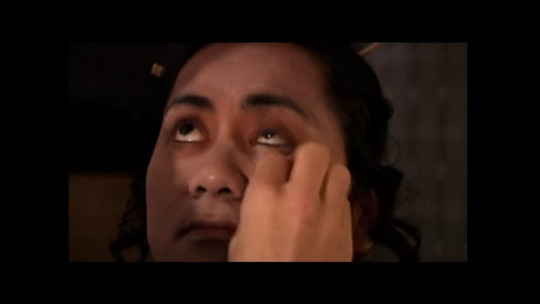



0 notes
Text
girl powERRRR to the nth powERRRR !!!!
Where’s my Louise?
Thelma and Louise (1991) by Ridley Scott made me celebrate women’s power. It was so empowering, inspirational, funny, witty and so fab (never wonder why it won the Best Screenplay in Academy Awards). This film presented different attitudes of women— Thelma, whose a housewife to a controlling husband, who never allows her to go out and have some fun as if she’s a servant and not a wife, surprised me with her braveness and shocked me her gun skills— her husband too, actually and Louise, whose a waitress and have a relationship with an easy-going man, let women know that we deserve more! We shall not settle for less because we are gems, sis? We are GEMS.
It was really beautiful.
We all need someone who would never leave us despite our craziness and would never regret that he/she met us in this material world— our ride or die.
PS: It was an exhilarating ride.




0 notes
Text
a jar of happiness in a nutshell, sis (a film review)
Amélie, an isolated woman, hears about Princess Diana’s accident lead her to a memorabilia box that would change her isolated life forever. “Le Fabuleux Destin d’ Amélie”, a 2001 French-romantic comedy film by Jean-Pierre Junet, revolves around a woman named, Amélie Poulain, born in Montmarte and a waitress at The Two Windmills— who grew up as an introvert but an imaginative and creative one, for ever since her childhood, she was only surrounded by her peculiar parents, her only friend— a goldfish, which was thrown away by her mother leaving her alone by herself. One night, as Lady Di, the Princess of Wales, died in a car accident, dropped a perfume-stopper rolled upon a wall tile and found a memorabilia box that impelled her to find its owner. From then on, as Amélie felt sudden contentment, she started fixing people’s messy lives— to sprinkle happiness and joy upon them. However, as she met Nico Quincampoix, a quirky guy who collects peoples’ torn and discarded pieces of photo booth pictures at Gare de l’Est ticket hall and was enchanted by him, Amélie began to feel anxious about her happiness as she struggles alone in her life. Le Fabuleux Destin d’ Amélie shall be watched for it was able to uniquely portray that patterns of life and innate human nature of inevitably craving for dreams, pleasure, love, and happiness to feel alive.
First of all, this film was something to be enjoyed and reflected on because of its fanciful narrative elements which are the following points; (1) the plot was well-devised that can provide the viewers to be enticed on the flow of its narrative. Starting from presenting Amélie’s childhood background or Amélie as a child [e.g. the physical environment, norms, habits, etc.] going to the core and connecting it to the protagonist’s conflict— which is “Man vs. Self” , that was deeply presented as she grew up by seeing how Amélie struggles in socializing and forming connections with people around her causing to resort on dreaming and trying to orchestrate events on the lives of the other characters but hesitant or unconscious of reciprocating it to herself. Moreover, it gives amusing scenes on how Amélie’s curiosity directed the happenings on the film. Also, (2) the use of an omniscient third point of view, an all-knowing one, as if Amélie’s journey was being watched by someone made the story more appealing. By the means of an omniscient narrator, it emphasized that an audience is expected to see a drastic change that would happen in the protagonist’s life— for at some point, it tells clichés in the story but not in an annoying way, [e.g. “Finally, on the night of August 30, 1997, comes the event that will change her life forever.”] leading a viewer to be more intrusive and intrigue by observing each step of Amélie. It also made the film wittier as someone was narrating each characters’ fetishes or quirks— giving the viewer such hints about their secrets or individualities that indeed, pleasure is innate to humans— and with those, it can actually raise a comparison between the other characters vs. Amélie by highlighting the differences of the general pleasures vs. hers. Another point, (3) the symbolisms which showcased significance on the development of its whimsical story are the following; (a) the treasure box or the childhood memorabilia of Dominic Bretodeau, who was a father longing for his childhood memories and his child, was the starting point of everything— it was the most influential thing in Amélie’s life because it is where she was able to suddenly feel a complete harmony within herself causing the events to flow naturally, (b) the painting of Raymond Dufayel, one of her neighbors whom described as The Glass Man, pertaining to Amelie as the girl with the glass water whom Dufayel can’t capture for he feels she’s an outsider, this symbolizes that Amélie, is an art on process— that is still needed to be released from her isolated realm making it more substantial and interesting to await for Amélie’s change, (c) her habit of skimming stones on the river, the movement itself, portrays sequence that once perfectly thrown can create continuous momentum and (d) the photo album of Nino Quincampoix, if it wasn’t because of this, she wouldn’t have the chance to fall in love with somebody as what Gina, Amélie’s fellow waitress said, [“Love is a great beautician”] and nothing would make a difference in her life. Thus, those components made the narrative well-composed, valuable and effective for people like seeing someone changing for good.
Second, its cinematography. It was tremendously apparent that this film’s cinematography used a lot of extreme close up shots using center and rule-of-thirds framing, to accent the significance of character’s facial expressions [wincing, smiling, crying, etc.], bodily movements in almost every scenarios creating a comedic and serious vibe and effectively presenting emotions [e.g. pleased, ecstatic, disgusted, awe, grief] of the characters for the details— not just details but extreme ones of their expressions were indeed, accentuated. One of the best scenes of extreme close-up in this film was the opening remarks, where it showed frames of portraying Amelie’s childhood giving the viewer a glimpse of the protagonist’s isolation for it was clear that she was just only enjoying her own company as well as, the innocence of youth. Some techniques that leading to this kind of shot was starting from a wide-angle shot then suddenly zooming in or tilting the frame as it introduces characters, complimenting a deeper analysis on their personalities and characteristics [e.g. fetishes, likes, dislikes, habits, etc.] Furthermore, it was also used for the objects that serve as clues or hints on Amélie’s complex schemes of dwelling into people’s lives— which is really interesting. Another example, the use of panning and combining it with center framing was also recognizable for the sequence of events in one scenario giving the effect of continuous movement of happenings [e.g. young Amélie taking a photo shifted to another character to make it look like it is just really happening naturally and portraying what’s on the environment] it gives a sense of involvement for the viewer which helps to build the intensity of events. The shaky camera technique— which is a unique way of portraying captured moments and how rapidly things are happening. This can be observed on some montage on the films [e.g. Amélie going to the train station and the last scene, where Nico and Amelie were riding in a motorcycle]. This kind of technique is something fresh on my eyes, it’s not a conventional type, as what is written on the former part which makes it unique. Also, Bruno Delbonnel’s color grading was astonishingly aesthetic. If someone would not notice how aesthetically pleasing Le Fabuleux Destin d’ Amélie is, then that someone is probably blind. At the utmost, it is the most critical part of the film that made everything wholesome. The combination and manipulation of vibrant and deeply saturated hues of red, green and yellow set the atmosphere of the film creating a French-vibe, what that context feels like, a dreamy, imaginative, whimsical, fanciful as if you were involved in the love-story of Amélie and Nico, the color grading was immensely, extraordinarily and exceedingly remarkable— setting the mood and the atmosphere throughout the film. The strong visual look of this film was everything, any viewers cannot deny it. The cinematography was meticulously planned and well-executed, I am almost out of words.
Third, to associate different scenes and to maintain its continuous state, this film is edited with the use of creative combinations of transitions. I think the transitions played the role of escalating the sequence of events— (a) how Hervé Schneid, the editor, used whip transitions to exemplify the change of season and time while focusing on one subject, (b) the cut-aways where Amélie got her revenged to the neighbor that fooled her, where there was an exchange of contrasting emotions— where it is obvious that Amélie was having fun messing with her neighbor while the latter was tremendously disappointed with what was happening, the transition made the scene really hilarious, (c) the used of match cuts especially on the scenes when Amélie was counting people who were having orgasms as well as, the scene where Georgette, the resident hypochondriac and Joseph, Gina’s rejected lover was having sex in the toilet room and how it wittingly conveyed the vibrations that the both characters felt while doing the action, I felt that, (d) the cross-cuts that was used to get inside the head of Amélie as she thinks about the pattern of possible actions of Nico making that scene feels extra saddening, and (e) how Amélie’s happiness was conveyed by the means of fast forwarding and jump cuts while riding the motorcycle with Nico, it was so good to feel the happiness of our dear protagonist. However, I think some standard cuts in the film were not consistent for some looks like unfinished and it made the motion looked not so natural— like it became a void to represent different scenes making the transition look odd and not effective.
Overall, Le Fabuleux Destin d’ Amelie, is indeed, a must be watched film for it expounded the following; for the narrative it serves— (1) a well-written plot, (2) the wittingly use of omniscient point of view, and (3) mind-blowing symbolisms, for the cinematography presented— (1) detailed subjects with the use of extreme close-ups while combining it with other angles to create connection of juxtaposed effect, (2) panning which imitates continuous movement and (3) aesthetically pleasing color grading, for the editing— how it used creative combinations of transitions, (1) match cuts, (2) cut-away, (3) cross-cut, etc. indeed, this film deserves its recognition for it would let the viewers to take chances, to take risks, to live our lives in pursuit of happiness. Thus proving that humans are inevitably craving for dreams, pleasure, love, and life to feel alive.

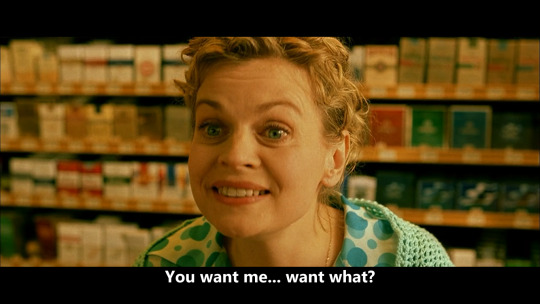
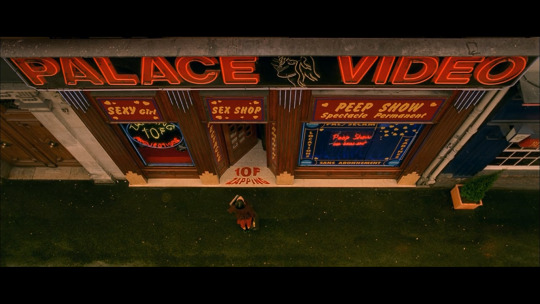

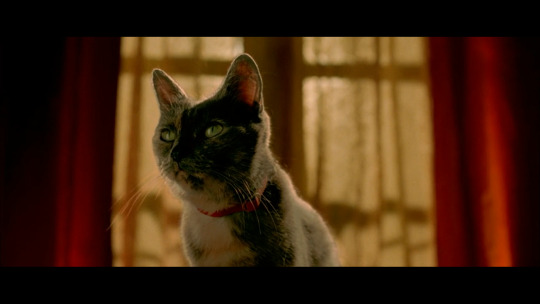

2 notes
·
View notes
Text
this film shows you how money works, sis
It was really good to watch again, something that you grew up with. I can still remember the glimpse of Mano Po, the first one, by Joel Lamangan and it was a privilege to see and watch it again for as a child, you never really go into the depths of the film, itself, right?
Now, I have realized... that the film itself speaks lots about the context of the Philippine society during that time. I can still remember how my parents told me about kidnapping cases when I was still a child, it haunted me and I thought it wasn’t real, but it really was and I believe, up until now, it is. This societal problem was exposed in the film— but it added more spice, for it showed how such delinquencies works and how crucial is the role of “money” and “status” in committing such acts.
Aside from that, Mano Po portrayed the struggles of the Chinese community in the Philippines— the stereotyping phenomenon of the Filipinos that Chinese people only wanted money, alone— like they are only seen as “money”. It also displayed familial ties, cultures, traditions, women’s attitudes, “under-the-table” act, status quo and how such things affects a family and everyone around them, as a whole.
PS: If you’re really a Filipino, you should probably know or aware of the Mano Po film series. If not, then you should go and search for it.
PSS: I LOVE KRIS AQUINO’S LINES, MARICEL SORIANO IS MY SPIRIT ANIMAL AND ARA MINA IS MY “ANNA OF TEKKEN” PEG!!!!

0 notes
Text
music + movie + animation + context + content = what an art
Pink Floyd: The Wall by Alan Parker has a lot of psychological triggering content.
It was a depressing, astonishing, mind-blowing kind of film. For me, it was something that is fresh— combining the music of Pink Floyd with animation and with real-world referent, it was tremendously good. It’s just that, there are some parts that I cannot bear, such scenes that is too much to be watched like how depression can eat somebody’s existence— I felt Pink’s pain, the protagonist, as he deals with the monsters inside her head for those monsters really exists in his reality.
In this film, there were lots of societal issues that were presented. Fascism, feminism, education, liberation, anarchism, revolution, etc. If I would recommend this to someone, I might say, he/she needs to prepare his/her mental state so they can actually grasp how I ended up seeing this film as an extravagant art.
PS: As I said, it has a lot of triggering contents and oozing of symbolisms. Beware.




4 notes
·
View notes
Text
Really, frats?
I wasn’t able to move on that easily with Maynila sa Kuko ng Liwanag by Lino Brocka but eventually, we’ve watched another heavy film by Mike de Leon entitled, Batch ’81— the title might sound like pretty much school-based but it isn’t like the typical ones, it is disturbing and awful.
It is indeed, disturbing and awful because it pierced something within me. It made me see and visualize what fraternities are and how does their shitty brotherhood can be earned especially with the issues going around the university these past few weeks, I almost didn’t watch it because I can’t bear human physical suffering and this film, has also, ‘triggering’ content.
Mike de Leon did a great job for dwelling with this kind of social issue within universities/schools for it is really happening and how the film itself was executed (e.g. scenes that displays hazing, the ‘paddle’, other initiation traditions of fraternities, how the camera works emphasizing the pain and suffering of the characters, etc.) astonishingly highlighted how power, authority, and influence can affect a group of individuals’ lives.
PS: This should be viewed by every student as a warning that fraternities, doesn’t mean ���brotherhood”. Really frats?



0 notes
Text
Philippines, ain’t that fun
Maynila: Sa mga Kuko ng Liwanag by Lino Brocka left me with such tremendous awe especially knowing that the experiences of every characters were true, evident and observable up until the current times.
Lino Brocka with this film, highly-portrayed the Philippines’ societal problems during that context and these are some of the following; (1) poverty— its settings showed slum areas, places that were chaotic with such frivolous noise, construction sites, etc., (2) the phenomenon of increasing population of rural individuals going to Imperial Manila for work and luck however, exploitation of laborers worsens— showed by the means of the treatment (e.g. contractualization, insufficient wages, money-making schemes, etc.) to the construction workers where Julio was also involved, (3) prostitution— where Julio was forced to work and sell his body and dignity to gays for money and as a viewer, I have seen the extent on which an individual can take risk to keep on surviving despite struggling or doing deeds against his/her will, how one can wait and follow what he/she ought is somehow right just to grasp a change in his/her life or for the one that he/she loves, how one can commit something crucial to avenge against such antagonistic forces and how one’s life can immensely be affected and ruined by political, social and economic factors.
PS: This film was too tragic and painful... sadly, this is the reality for some Filipinos. Indeed, a remarkable one.




0 notes
Text
at some point, you can’t deny how you wanted the world to notice your existence, sis

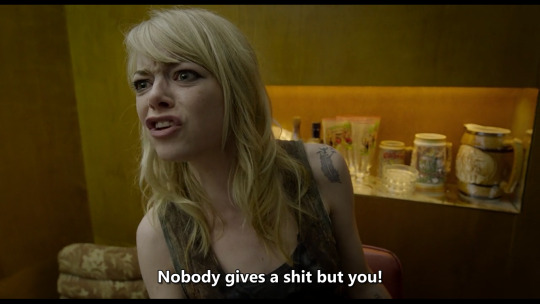




Birdman (The Unexpected Virtue of Ignorance) by Alejandro G. Iñárritu, fucked me with its wittingly, relatable, almost high-falutin existential thoughts being exemplified by the means of its dialogue. It’s applaudable, it kicked my butt out by telling me that I am not significant— that I am just living in a bubble of eagerness for people to see that I exist, that I have a place in this realm, that I am something, that validations are needed to make me feel somehow contented— and that’s because I am always thirsty to find that satisfaction to meet that certain contentment which all boils down just to fill up my existence. That’s how good it is, that’s how the script was well done. It told me how people can be selfish, egotistic, self-absorbed, risk-takers, pretentious— just to make us feel alive.
This film also banged me with how the cinematography works, it showed the reality behind theatre plays— how tremendously chaotic and messy the backstage is, from the set itself and of course, the ones who run it. The long wide-angle shots, the continuous, the theme and shit, the colors. I don’t know I love it. Lastly, the metaphor, the birdman, whom I do not want to spoil but it turns out that he’s the alter-ego of Riggan, the protagonist (oopsie, sorry). Special mention, the actors and actresses, played a massive great portrayal of their characters— I felt everyone’s struggles, it was not only focusing on one character. What this film did is that, it emphasized how the supporting roles build up each scenes all going down on how they can make the stage play happen successfully. Damn, damn, damn— no wonder that they are nominees for Oscars. Sheez, you end my day right, Alejandro. What a good film you have made.
PS: Do I also have a birdman?
2 notes
·
View notes
Text
* sfx: applause *

Serbis by Brillante Mendoza was oozing with presenting societal issues and situations in the Philippine context.
Who would have thought that an nth-floor theatre was used for showing porn and a place for prostitution? Pre-marital sex resulting to early pregnancy and unwanted pregnancy? Earning a degree but weren’t able to earn an inclined job? Such concepts were presented in this and the straight-forwardness of this film is highly commendable. It was so pleasurable to hear the real noises of what an urbanized place looks like — how it so chaotic and alive for them to keep on living. This film, somehow left me puzzled at the end, but I think that’s it — Brilliante Mendoza wanted to show, that kind of lifestyle would perpetuate in Pineda Family.
PS: Maximize the volume as you watch this.
0 notes
Text
Darn, we goin’ to a contemporary one who presented a pioneer one.

Hugo by Martin Scorsese was the first film we’ve watched during class hours. It was my generation type of film — the colored, 3d or the modern one.
It was magical and heart-rending film for it showed upon my eyes the creation — the craft of George Méliès, a filmmaker and a pioneer of the world cinema, made me realize how creative people back then. Created everything from scratch, specifically, a production that can be sense by touch, how curiosity can really driven someone to invent and produce something until how Méliès’ passion was scorched and it was so painful to watch — for that was indeed, true. Artist can be burnout from what they love.
PS: Hugo’s protagonist was really a cutie kid.
0 notes
Text
Want to know the power of film? Here’s one of the answer.

The Birth of a Nation by D.W. Griffith really got me like— shocked and terrified.
To be honest, I was not that knowledgeable about the history of the Civil War between South and North America, way back then. This film, almost got me if only my lover didn’t remind me about its context. That’s when I came to an understanding that everything is indeed, political— and film can be one of these platforms to spread any propagandas. It was terrifying for it can really persuade people to believe in something despite its contradiction with the history.
Ps: I was shocked because it has two parts and it was my first time watching a three-hours film.
0 notes
Text
*non-verbatim* “wTF u still gonna watch a 1900′ film, u ok sis?”
Yes, sis. I did watch a 1927 film— first time, it was The Jazz Singer’s fault.
An almost five-minute overture, exit and all throughout operatic and classical background music, black-and-white touched, excessive acting and usage of non-verbal cues, displayed narration with a very minimal dialogue— this film, really leapt me way back to this time, but I cannot deny how fascinated I was with how film was presented during that context and as a newbie, the Jazz Singer, helped me to grasp the difference of what I knew vs. what I didn’t.
Like, seriously— I didn’t expect much from it from the start, I thought it was gonna be boring and elusive to watch, but look who cried? Jack’s passion with his dreams was contagious, I felt that. The visuals of the film wasn’t painful, it was the story of Jack towards his love for theatre— for he really did everything and something came to my mind, we all are craving to find the place where we belong.
I loved it, more than being tagged as the first talkie.
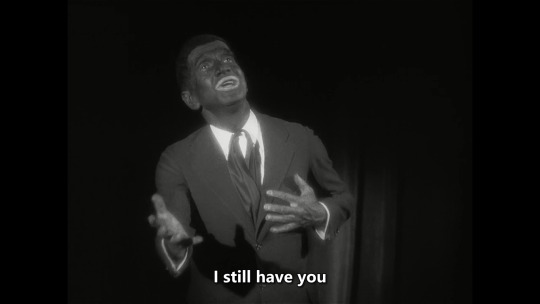
1 note
·
View note